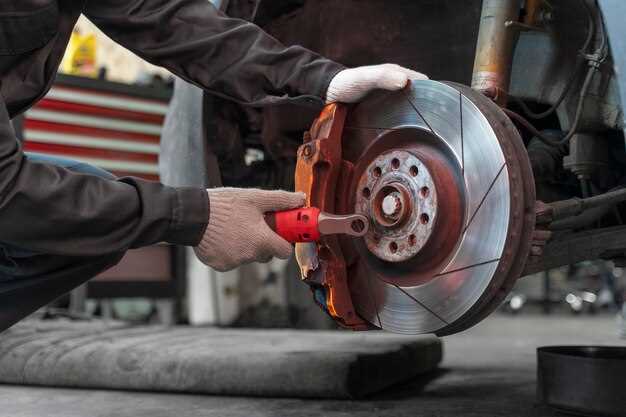
Regular brake inspections are crucial for maintaining the safety of vehicles on the road. The braking system is one of the most vital components of any automobile, and its failure can lead to catastrophic consequences, both for the driver and for surrounding road users. Therefore, ensuring that brakes are in optimal condition through regular checks is not just a matter of vehicle maintenance; it is a fundamental aspect of responsible driving.
Brakes do not merely stop a vehicle; they also provide the driver with necessary control under various driving conditions. As components wear out due to friction and heat, their efficiency can deteriorate rapidly. Conducting routine inspections allows vehicle owners to identify potential issues, such as worn brake pads, fluid leaks, or damaged rotors, before they escalate into more serious problems. Ignoring these checks may lead to decreased stopping power, which significantly increases the risk of accidents.
Beyond personal safety, regular brake inspections contribute to the overall safety of the community. When vehicles are well-maintained, they are less likely to cause malfunctions that can endanger other drivers, pedestrians, and cyclists. Ultimately, prioritizing brake inspections not only protects the individual driver but also fosters a safer road environment for everyone.
Understanding the Importance of Brake Functionality

Brake functionality is a critical aspect of vehicle safety, directly influencing the driver’s ability to control the vehicle and respond to emergencies. The braking system is designed to slow down or stop a vehicle effectively, ensuring safety for occupants and other road users. Regularly assessing brake performance is essential to identify potential issues before they escalate into serious failures.
The effectiveness of brakes depends on various components, including brake pads, rotors, calipers, and brake fluid. Each part plays an integral role in the overall braking process; thus, any deterioration or malfunction can compromise performance. For instance, worn brake pads may lead to longer stopping distances, increasing the risk of collisions.
Understanding how brake functionality works not only aids in recognizing warning signs, such as squeaking or grinding noises, but also encourages proactive maintenance. Drivers should be aware of the importance of brake fluid levels, as inadequate fluid can undermine hydraulic pressure and result in brake failure.
Additionally, environmental factors can affect brake performance. Factors such as heat, moisture, and road conditions can impact braking efficiency. This highlights the importance of adapting driving habits and performing routine inspections to accommodate varying conditions.
In conclusion, comprehending the significance of brake functionality and committing to regular inspections can significantly enhance safety. Effective brakes are fundamental in preventing accidents and ensuring a safe driving experience, underscoring the need for diligence in vehicle maintenance.
Identifying Warning Signs of Brake Issues
Understanding the warning signs of brake problems is essential for maintaining vehicle safety. Ignoring these signs can lead to severe accidents and costly repairs. Here are some critical indicators of potential brake issues:
| Warning Sign | Description |
|---|---|
| Grinding Noise | If you hear a grinding noise when braking, it usually indicates that the brake pads are worn down and need replacement. Continuing to drive with this issue can damage the rotors. |
| Squeaking or Squealing | Squeaking or squealing noises often signify that the brake pads are beginning to wear thin. This serves as an early warning to have the brake system checked. |
| Vibration or Shaking | If the steering wheel or pedal vibrates when braking, it could indicate warped rotors or other mechanical issues. This condition requires immediate attention to ensure proper braking performance. |
| Soft or Spongy Brake Pedal | A pedal that feels soft or spongy may suggest air in the brake lines or a brake fluid leak. This condition can severely compromise braking efficiency. |
| Brake Warning Light | If the brake warning light illuminates on your dashboard, it indicates a problem in the braking system. Ignoring this warning can lead to brake failure. |
| Pulling to One Side | If the vehicle pulls to one side when braking, this could signify uneven brake pad wear or an issue with the brake calipers. This condition can impact control and lead to accidents. |
Regularly monitoring these warning signs and performing brake inspections can prevent serious safety issues. If any of these symptoms arise, it is essential to consult a professional mechanic promptly to evaluate the braking system.
Frequency Recommendations for Brake Inspections
Regular brake inspections are essential for maintaining vehicle safety and ensuring optimal braking performance. It is generally recommended that drivers have their brakes inspected at least once a year. However, the specific frequency can vary based on several factors, including driving habits, vehicle type, and mileage.
For individuals who frequently drive in heavy traffic, hilly areas, or engage in towing, more frequent inspections–such as every six months–are advisable. This is due to the increased wear and tear on brake components under these conditions. Additionally, if a driver notices any unusual sounds, vibrations, or a decrease in braking responsiveness, an immediate inspection is warranted regardless of the time elapsed since the last check.
For vehicles that undergo significant mileage, especially those exceeding 15,000 miles annually, more regular assessments are prudent. Both the front and rear brake systems can wear unevenly, necessitating a closer examination after reaching significant mileage milestones. Consult the vehicle’s owner manual for manufacturer-recommended service intervals, which may provide specific guidelines tailored to the vehicle model.
Fleet vehicles, commercial trucks, and vehicles used in demanding professional environments should adhere to a strict inspection schedule, potentially every three months. These vehicles are subject to higher usage rates, making regular inspections crucial to avoid costly breakdowns and ensure driver safety.
In summary, while a general guideline suggests annual inspections, adapting the frequency to individual driving conditions and habits is critical for maintaining effective brake functionality and overall road safety.
Choosing the Right Service Center for Brake Checks
Selecting a competent service center for brake inspections is crucial for ensuring vehicle safety and performance. Begin by researching local options, focusing on establishments that specialize in brake systems. Check for certifications that indicate the technicians are properly trained, as this can reflect the quality of service you can expect.
Read customer reviews and ratings to gauge the reputation of the service center. Positive feedback from previous clients often signifies trustworthiness and expertise. Pay attention to reviews specifically mentioning brake inspections, as this will help you understand their proficiency in this critical area.
Inquire about the tools and technology used in brake inspections. A reputable center should employ modern equipment to accurately diagnose issues. Consider asking about the inspection process to ensure they cover all necessary aspects, such as brake pads, rotors, lines, and fluid.
Cost is another important factor. While it’s tempting to opt for the cheapest service, remember that quality often comes at a price. Request estimates from multiple centers to compare not just prices, but also the services included. A transparent breakdown of costs can provide insight into what you are paying for.
Lastly, consider the service center’s warranty policy on parts and labor. A solid warranty indicates assurance of quality and gives you peace of mind should any problems arise after the service. By carefully evaluating these factors, you can choose a service center that prioritizes safety and reliability in brake inspections.
The Impact of Weather Conditions on Brake Performance
Weather conditions significantly influence the performance of vehicle brakes. Rain, snow, ice, and extreme temperatures can affect braking efficiency and increase stopping distances. Wet roads can lead to hydroplaning, reducing tire grip and affecting the vehicle’s ability to stop promptly. In such conditions, drivers may need to apply more pressure on the brake pedal, which can lead to overheating and potential brake fade.
Cold weather presents its own challenges. When temperatures drop, brake components can become stiff, and brake fluid may absorb moisture, leading to decreased performance. Additionally, snow and ice can create a slippery surface, requiring drivers to adjust their braking techniques to avoid skidding. The accumulation of ice on brake pads and rotors can also diminish braking power, increasing the risk of accidents.
High temperatures can result in brake overheating, especially during prolonged braking situations, such as descending steep hills. When brakes overheat, they lose effectiveness, which can lead to a dangerous situation if not addressed. Alongside heat, dusty or sandy environments can interfere with the braking system by clogging components, leading to abrasion and wear.
Understanding how weather affects brake performance is crucial for maintaining safety on the road. Regular inspections and adjustments, particularly before and during adverse weather conditions, can help ensure that brakes perform optimally. Drivers should remain vigilant and modify their driving habits according to weather conditions to enhance overall safety and vehicle performance.
Cost Benefits of Preventative Brake Maintenance
Preventative brake maintenance is not only vital for safety, but it also offers significant cost savings over time. By regularly inspecting and maintaining brake systems, vehicle owners can avoid expensive repairs and extend the lifespan of their brakes. The following points outline the cost benefits associated with preventative brake maintenance:
- Reduced Repair Costs: Regular maintenance allows for the early detection of issues before they escalate into major repairs. Fixing a minor brake problem is substantially less expensive than addressing a complete brake failure.
- Extended Brake Lifespan: Routine checks and maintenance can enhance the lifespan of brake pads, rotors, and other components. This means fewer replacements over time and lower overall costs.
- Improved Fuel Efficiency: Well-maintained brakes reduce drag, leading to improved fuel efficiency. This can translate into savings at the pump, contributing to overall vehicle upkeep costs.
- Decreased Insurance Premiums: Some insurance providers may lower premiums for vehicles that are regularly maintained. By demonstrating responsible vehicle care, drivers may qualify for discounts.
- Minimized Downtime: Preventative maintenance helps ensure that vehicles remain operational and reliable. Reducing unexpected breakdowns minimizes downtime and the associated costs of rental vehicles or road service.
Investing in preventative brake maintenance is a proactive approach that not only enhances safety but also leads to considerable long-term savings. By prioritizing regular inspections and servicing, vehicle owners can ensure that they keep both their finances and their vehicles in top shape.














